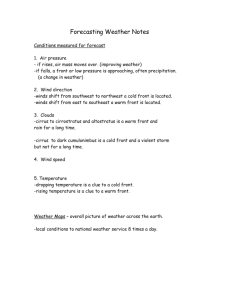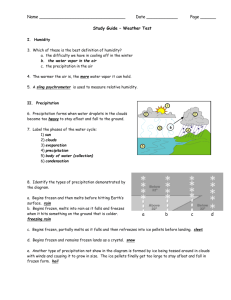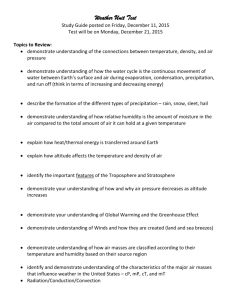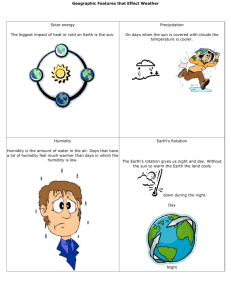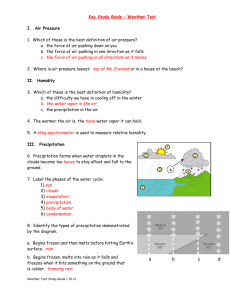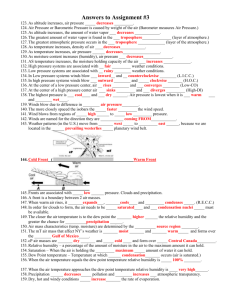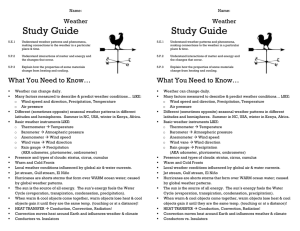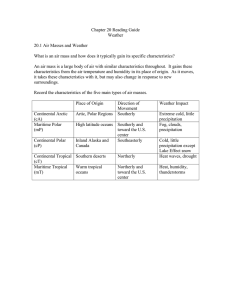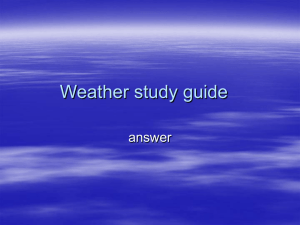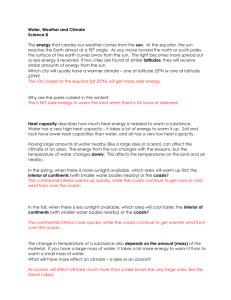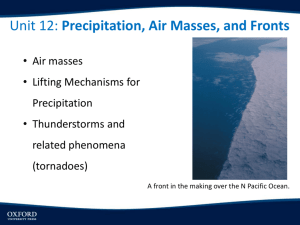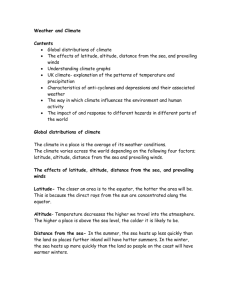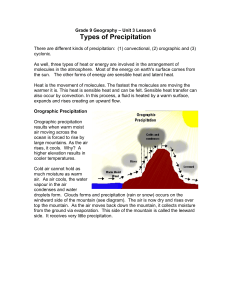Study Guid - JGMS- Navigators Team
advertisement
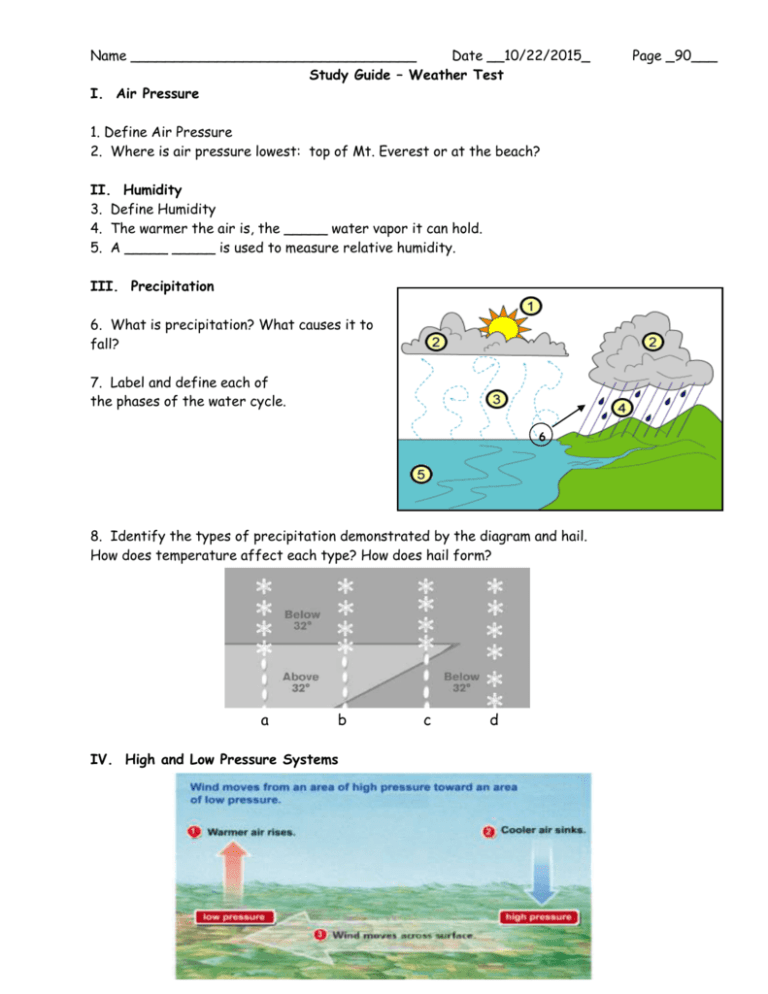
Name _________________________________ Date __10/22/2015_ Study Guide – Weather Test I. Air Pressure 1. Define Air Pressure 2. Where is air pressure lowest: top of Mt. Everest or at the beach? II. Humidity 3. Define Humidity 4. The warmer the air is, the _____ water vapor it can hold. 5. A _____ _____ is used to measure relative humidity. III. Precipitation 6. What is precipitation? What causes it to fall? 7. Label and define each of the phases of the water cycle. 6 8. Identify the types of precipitation demonstrated by the diagram and hail. How does temperature affect each type? How does hail form? a b IV. High and Low Pressure Systems c d Page _90___ 7. Warm air is less _____ than colder air and _____ in the atmosphere. 8. Rising moist air causes areas of _____ pressure, creates clouds, and is associated with _____ weather. 9. Cool air is more _____ than warmer air and _____ in the atmosphere. 10. Sinking dry air causes areas of _____ pressure, evaporates clouds, and is associated with _____ weather. 11. Winds are caused by air molecules that move from….. 12. Draw the map symbol for each front and match the following fronts with their descriptions. Occluded Warm Cold Stationary A warm air mass overtakes a cooler air mass leading to a long period of rain. A warm air mass is trapped between two colder air masses. A warm air mass and a cold air mass meet but neither move leading to several days of consistent weather. A cold air mass overtakes a warmer air mass leading to stormy weather. V. Blizzard VIII. Thunderstorms 12. Define blizzard: 13. How can a blizzard occur even when snow is not falling? 14. Which of the following would happen in both a winter blizzard and a summer thunderstorm? a. lightning b. sleet c. heavy precipitation VI. Flood 15. What are two causes of floods? VII. Hurricane 16. Where do hurricanes form? 17. What are three dangers of a hurricane? 18. What causes a thunderstorm? 19. What are three dangers of a thunderstorm? 20. What two things are produced by a bolt of lightning? IX. Tornado 21. What are two weather elements are associated with tornadoes? 22. What is the rating system for tornadoes? X. Weather Forecasting 23. Scientists that studies weather systems are called __________. 24. Match each weather tool with its definition: Column I Column II ____ radar a. takes measurements of air conditions over a large area and at different altitudes ____ weather balloon such as temperature, air pressure, and humidity ____ ground station b. takes measurements of cloud height; one type is Doppler which also detects air ____ satellite motion and precipitation c. sends information back to Earth while in ____ weather planes and ships orbit; records cloud cover, warm and cool regions, and invisible water vapor d. takes measurements in a single location on land such as temperature, precipitation, wind speed, and air pressure e. takes measurements along a path; can be used to gather information from hurricanes or other storms XI. Weather Map Using the following map, answer the following questions: 25. Low pressure often brings stormy weather, and high pressure often brings fair weather. Which of the locations is most likely to have clear skies? a. Q b. R c. S d. U 27. In what direction is the cold front moving? 28. What type of weather should city “U” be expecting?
